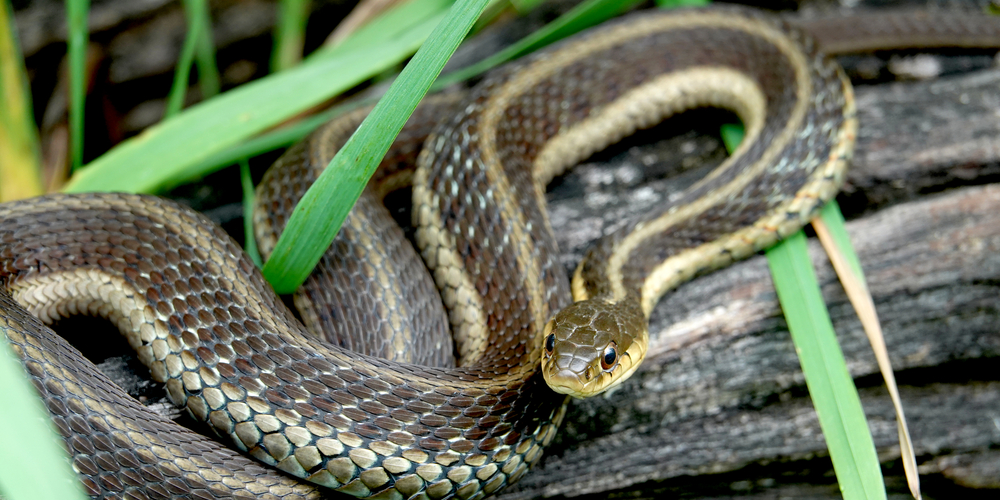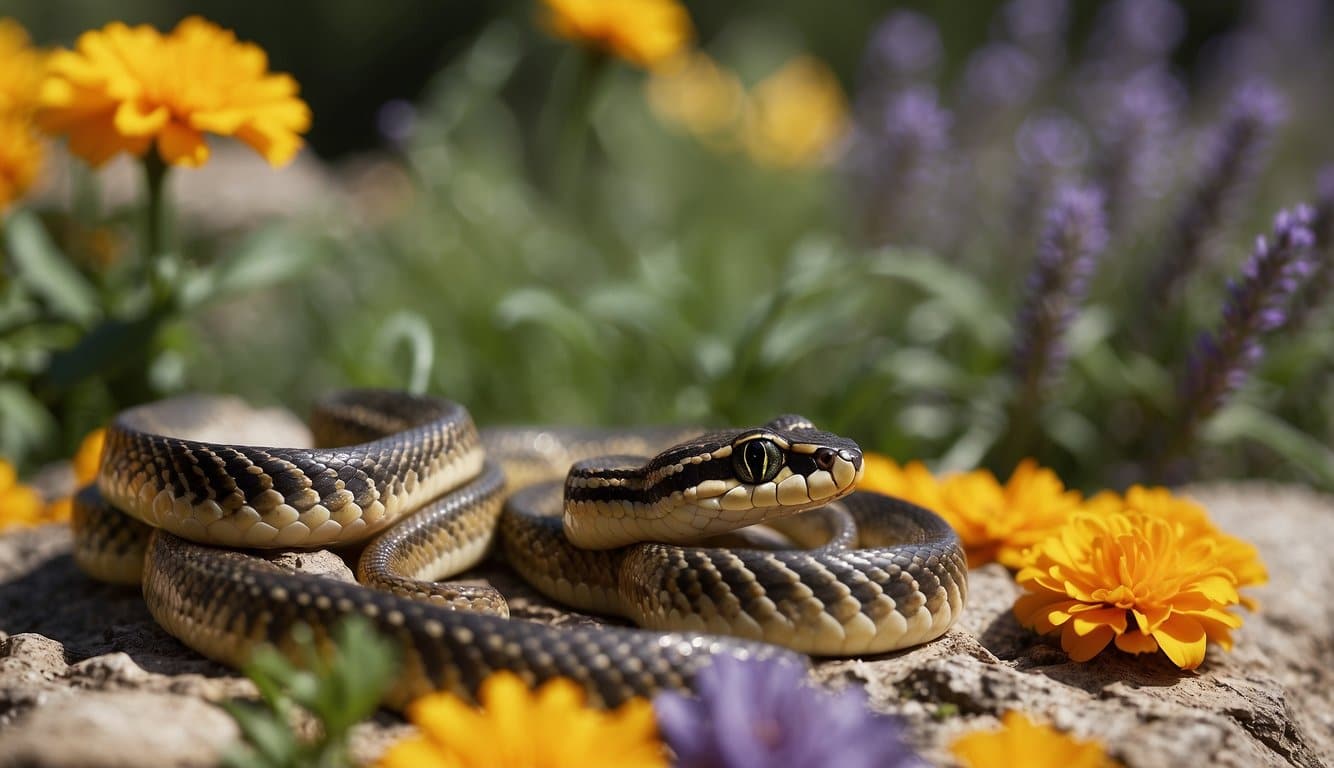| Question | What Do Garter Snakes Eat? |
|---|---|
| Answer | A Varied Diet |
| More Info | Garter snakes are carnivorous and have a diverse diet that can include earthworms, amphibians (like frogs and toads), small fish, slugs, and insects. They are opportunistic feeders, which means they will eat almost any appropriately sized prey they can catch. In some cases, larger garter snakes have been known to eat small rodents, such as mice, especially in captivity where natural prey might not be as abundant. |
Garter Snake Diet: 101 (What They Eat + Frequency)
Garter snakes are carnivores with a diet that is both varied and fascinating. They play a crucial role in the ecosystem as predators, and understanding their feeding patterns can be quite insightful.
Primary Diet
- Earthworms and slugs: Garter snakes often consume these invertebrates as a significant portion of their diet.
- Amphibians: Frogs and toads are common prey for garter snakes.
- Fish: They eat small bony fishes, such as minnows and guppies, as mentioned in their dietary preferences.
- Mammals: Smaller mammals like mice may occasionally fall prey to them.
- Reptiles: Garter snakes can also eat other small reptiles and anurans.
Feeding Behavior
- Frequency of Meals: An adult garter snake typically eats every 7 to 10 days, while a baby or pregnant female may eat every 4 to 5 days.
- Hunting Methods: They are known to use their keen sense of smell to locate prey.
- Hunting Methods (cont.): For pet snakes, you can allow them to exhibit natural hunting behavior by placing live prey, such as fish, in water within their enclosure.
- Hydration: Fresh water should be provided daily to maintain their hydration levels.
Prey Selection
When examining the diet of garter snakes, you’ll find their choices are mainly divided into two groups: invertebrates and vertebrates. Each caters to the snake’s nutritional needs and hunting abilities.
Invertebrates as Prey
- Worms: Earthworms form a substantial part of their diet, providing essential nutrients.
- Amphibian Larvae: They are known to consume frog eggs and tadpoles found in aquatic environments.
- Arthropods: Garter snakes often eat slugs and leeches, which are easy to catch and digest.
Garter snakes have evolved to be effective hunters of these slippery and often hidden prey. Their diet flexibility allows them to thrive in diverse habitats, ensuring they always have access to some form of nourishment.
Vertebrates as Prey
- Fish: Garter snakes often hunt live fish, a skill requiring precise aquatic agility.
- Amphibians: Frogs and toads are a common choice, thanks to their prevalence in the same habitats as garter snakes.
- Small Mammals: Larger garter snakes may opt for occasional small rodents, whereas younger snakes may find this prey challenging.
- Reptiles: Smaller lizards can also be part of their diet, provided the snake can overpower the reptilian prey.
Your garter snake’s habitat determines its vertebrate prey options, with those living near water favoring fish and amphibians, while land-dwellers might have easier access to small mammals and lizards.
Hunting Methods
Garter snakes have evolved various hunting strategies to capture a plethora of prey ranging from worms to small mammals.
- Active Searching: Your garter snake will often actively forage for prey, using its keen sense of smell to locate potential food sources.
Active Searching (cont.): This can involve them slithering through dense undergrowth, around ponds, and through fields in search of their next meal.
Active Searching (cont.):
- Investigate underneath rocks and foliage.
- Swim through water in pursuit of aquatic creatures.
- Explore burrows for hidden prey.
- Ambush Tactics: Sometimes they employ surprise attacks on unsuspecting prey. They may lie in wait near areas of high prey traffic such as insect trails or near water bodies.
- Constriction: While not as powerful as some of their serpent kin, garter snakes can subdue smaller prey by constriction.
Visual Cues: Prey movement often catches their attention, prompting a quick response. Garter snakes have good vision for detecting motion, which they use to their advantage.
It’s fascinating to know that garter snakes utilize their environment to enhance their hunting efficiency. For example, they may position themselves in strategic locations where insects are abundant or amphibians frequent.
For more insight about the hunting tactics of these snakes, consider reading up on the hunting techniques of garter snakes.
Seasonal Dietary Changes
Garter snakes, like many reptiles, experience shifts in their diet as the seasons change. Due to their cold-blooded nature, their metabolic rate is influenced by external temperatures, which impacts their feeding habits.
Spring:
- Emergence of prey: After brumation (a hibernation-like state), the rise in temperature encourages earthworms and amphibians to become more active, making them readily available for garter snakes.
- Increased feeding: You’ll notice garter snakes become more active in searching for prey as they need to recover the energy lost during the colder months.
Summer:
- Plentiful resources: With the abundance of life, garter snakes take advantage by consuming:
- Insects like crickets
- Small mammals
- Bird eggs
- Water hunting: They may be spotted near water sources, hunting for small fish or tadpoles as these areas are teeming with life.
Fall:
- Preparation for winter: Garter snakes intensify their feeding to build up reserves for brumation. They might be less picky, consuming whatever is available, as certain prey begin to dwindle.
Winter:
- Brumation period: Your garter snake will likely eat very little or not at all during this time, as their metabolic rate slows down significantly.
Impact of Diet on Garter Snake Ecology
Your curiosity about garter snakes might lead you to wonder how they influence their environment. The diet of these slender serpents plays a pivotal role in shaping their ecological niche. Here are a few ways how:
- Predator-Prey Dynamics: Garter snakes consume a variety of prey species, such as:
- Worms
- Frogs
- Slugs
- Small mammals
This predation helps to regulate the populations of these species, maintaining a critical balance within their ecosystems.
- Competition for Resources: By eating a diverse array of organisms, garter snakes may compete with other predators that rely on similar food sources. Their dietary habits can dictate the distribution and abundance of competitors within the same habitat.
- Seasonal Adaptations: Their flexible diet allows them to adapt to seasonal changes in prey availability. For example, they might consume more amphibians during the wet season when these creatures are abundant.
- Environmental Indicators: Garter snakes can be indicators of environmental health. Their presence and dietary shifts can reveal changes in the abundance of certain prey groups, indicating shifts in environmental conditions.
- Habitat Influence: The diet of a garter snake also has a direct effect on the habitats they occupy. For instance, if a particular prey is abundant in a specific area, garter snakes may congregate there, thus affecting the local fauna.
Frequently Asked Questions
In this section, you’ll find detailed answers to common inquiries about the dining habits of garter snakes in various contexts and life stages. These insights will guide you through understanding their dietary choices across different ecosystems and developmental phases.
What can be typically found in the diet of a garter snake during winter months?
During winter months, garter snakes often brumate and significantly reduce their food intake. If they do eat, they might consume available amphibians or fish in mild climates.
What do juvenile garter snakes consume when they are young?
Juvenile garter snakes typically feed on small prey such as worms, insect larvae, and small amphibians which provide the high protein content necessary for rapid growth.
What constitutes the diet of garter snakes in the California ecosystem?
In the California ecosystem, garter snakes’ diets are diverse, including slugs, frogs, and small fish, reflecting the varied habitats they occupy, from coastal areas to grasslands.
What is considered the preferred prey for garter snakes?
Garter snakes prefer prey that is abundant and easy to overpower such as earthworms, amphibians, and minnows. Their hunting strategy is opportunistic, and they’ll eat almost any suitably-sized prey available.
Is rodent prey like mice a suitable food option for garter snakes?
Mice can be a suitable food option for larger garter snakes; however, their typical prey includes smaller and easier-to-digest animals such as insects and worms. Rodent prey is less common but does occur in their diet, especially in captive situations.
What types of food sources attract garter snakes to residential areas?
Garter snakes are attracted to residential areas by food sources such as garden pests, including slugs, insects, and occasionally small mammals.
This makes them natural pest controllers.

